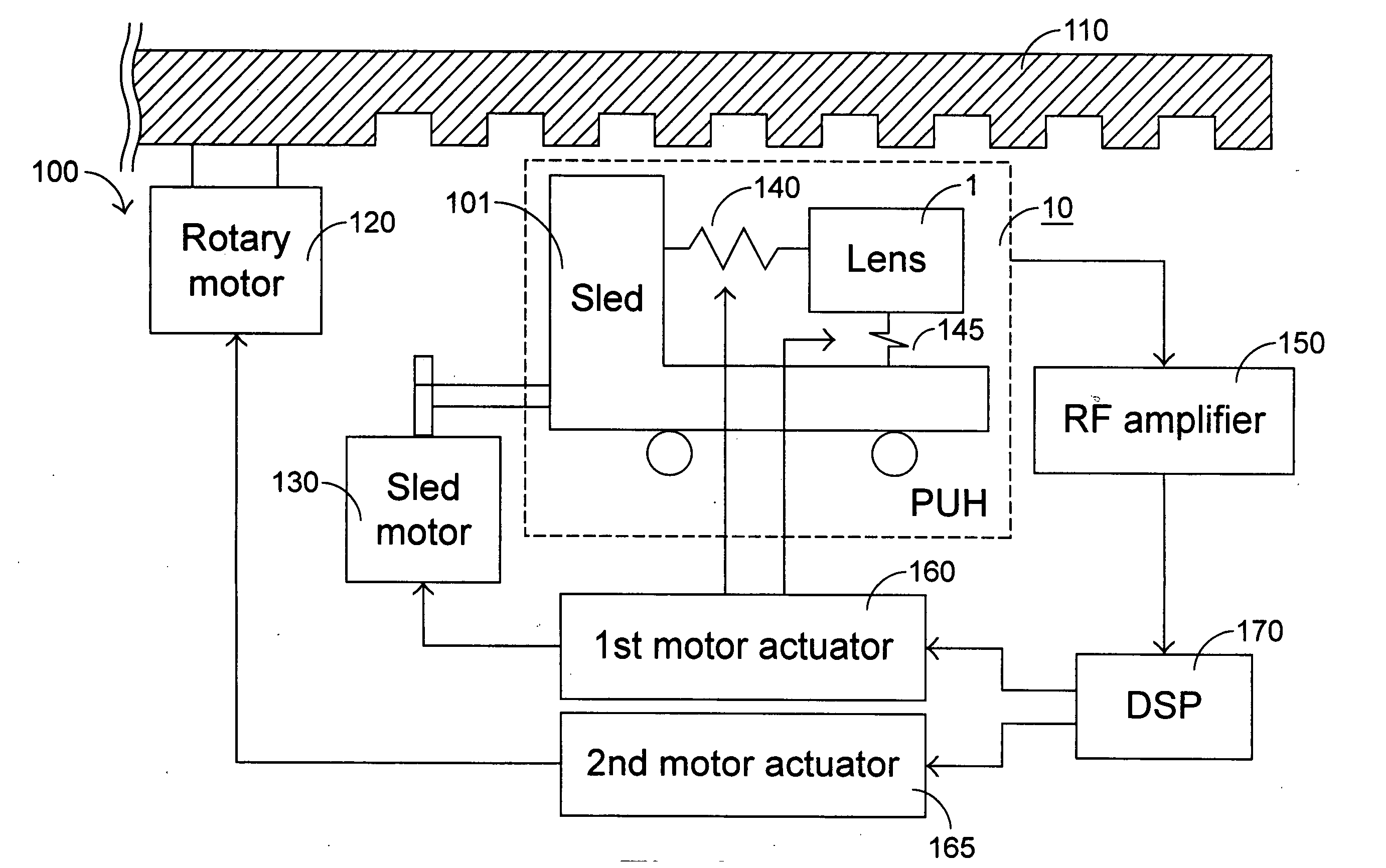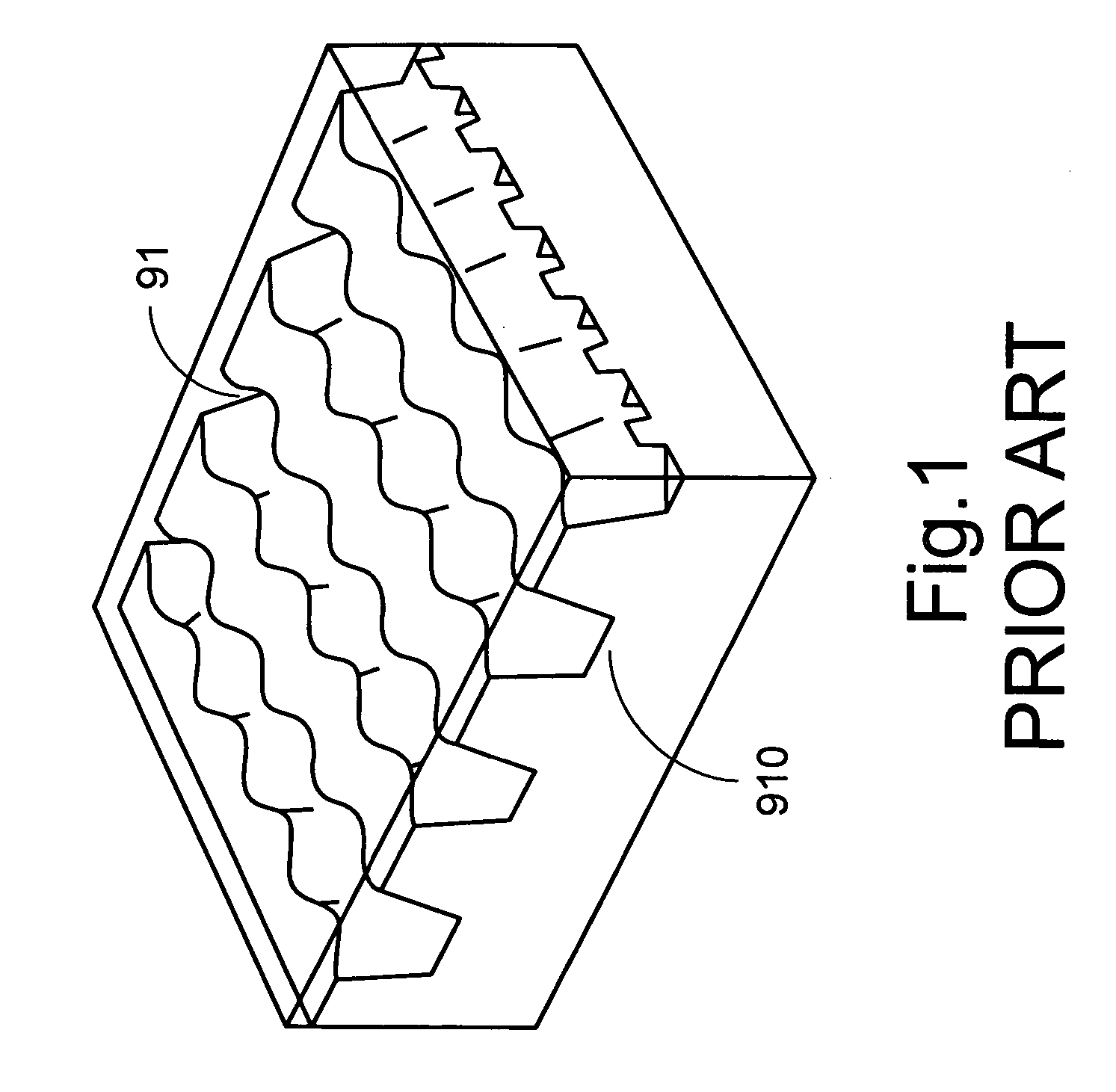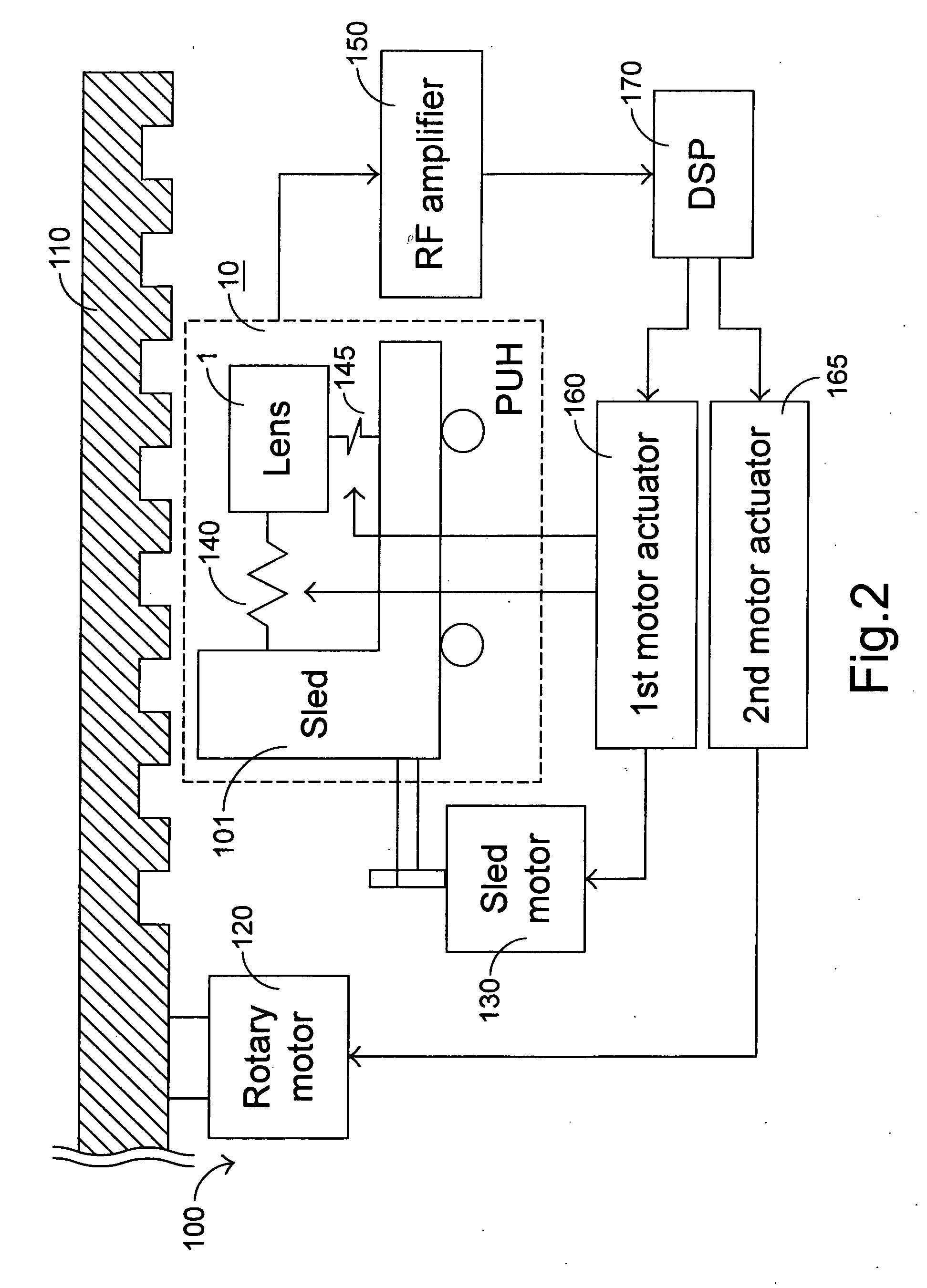Writing control method of optical recording/reproducing apparatus
- Summary
- Abstract
- Description
- Claims
- Application Information
AI Technical Summary
Benefits of technology
Problems solved by technology
Method used
Image
Examples
Embodiment Construction
[0017] Please refer to FIG. 2. The optical recording / reproducing apparatus 100 includes an optical pickup head (PUH) 10 that is moved by a sled motor 130 and finely tuned with a tracking coil 140 in the tracking direction. In addition, the PUH 10 is moved in the focusing direction with a focusing coil 145. After the sled 101 of the PUH 10 is moved for a seeking operation by the sled motor 130, the lens 102 of the PUH is shifted with the tracking coil 140 and the focusing coil 145 for tracking and focusing operations.
[0018] For well tracking and addressing in a writing procedure, a feedback tracking mechanism is implemented. That is, the PUH 10 reads wobbles from the optical disc 110 so as to generate a wobble signal, and then a radio-frequency (RF) amplifier 150 generates a radio-frequency (RF) signal, a tracking error (TE) signal and a focusing error (FE) signal in response to the wobble signal. The RF, TE and FE signals are then inputted into and processed by a digital signal pro...
PUM
 Login to View More
Login to View More Abstract
Description
Claims
Application Information
 Login to View More
Login to View More - R&D
- Intellectual Property
- Life Sciences
- Materials
- Tech Scout
- Unparalleled Data Quality
- Higher Quality Content
- 60% Fewer Hallucinations
Browse by: Latest US Patents, China's latest patents, Technical Efficacy Thesaurus, Application Domain, Technology Topic, Popular Technical Reports.
© 2025 PatSnap. All rights reserved.Legal|Privacy policy|Modern Slavery Act Transparency Statement|Sitemap|About US| Contact US: help@patsnap.com



